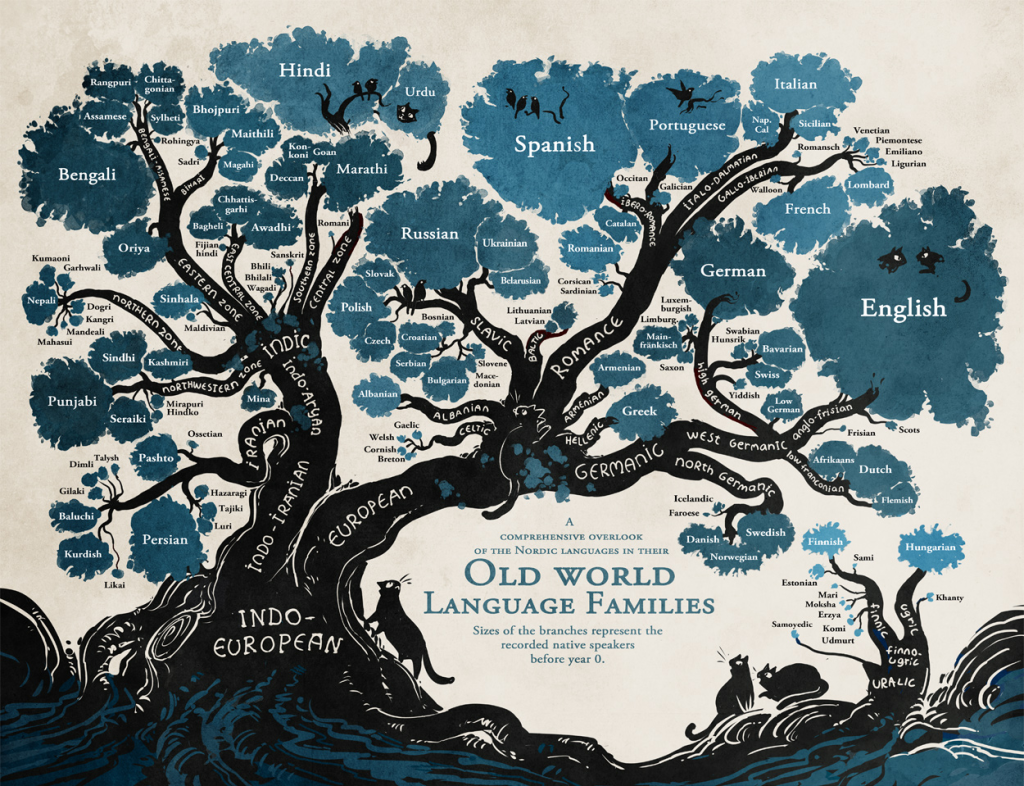
Semiotics is the study of signs/symbols and their use or interpretation in artificially constructed languages and natural languages. Similar to semiotics, the philosophy of language follows the traditional division of 1) syntax, 2) semantics, and 3) pragmatics. While syntax is the grammar of a language, semantics is the meaning of words and the relation of signs/symbols to the objects to which the signs/symbols are applicable. Pragmatics deals with the relationship between speakers/writers and their signs/symbols.
The philosophy of language also interacts with epistemology and metaphysics. What it is in our understanding that enables us to generate and use language interacts with epistemology. And the relation of signs/symbols to the objects to which the signs/symbols are applicable interacts with metaphysics.
Finally, language is a human activity. Much like we have human families, we also have language families. Each major family, or tree of human language, also has many branches. Some of the major family trees are alphabetically as follows:
- Afro-Asiatic
- Altaic
- Dravidian
- Indo-European
- Niger-Congo
- North-South American
- Sino-Tibetan
- Uralic
For additional resources, please see Philosophy of Language, Epistemology, and Metaphysics.
~ Boethius ~